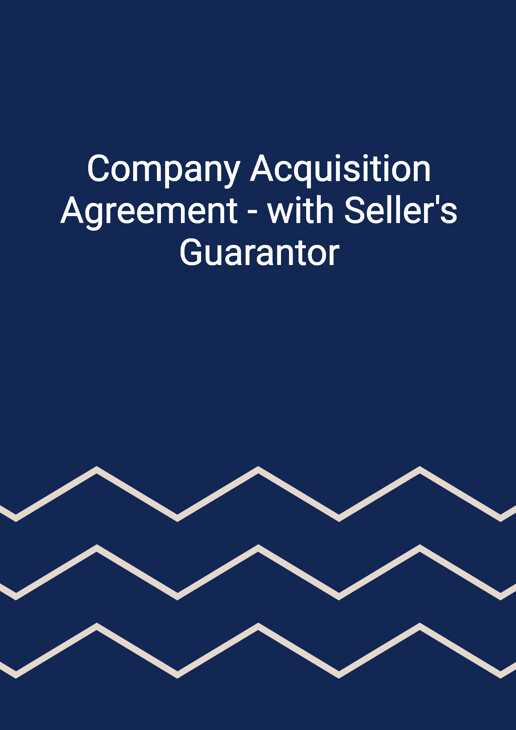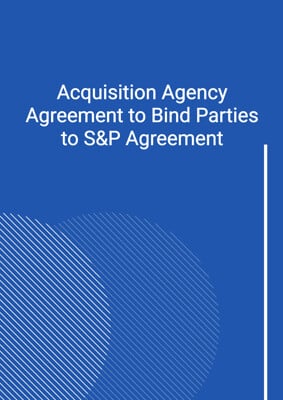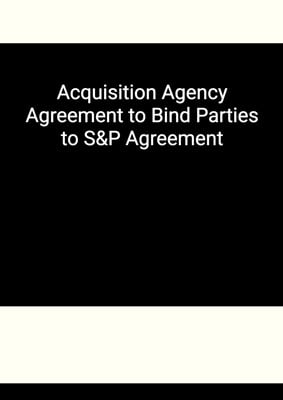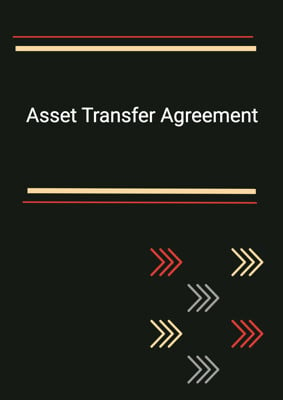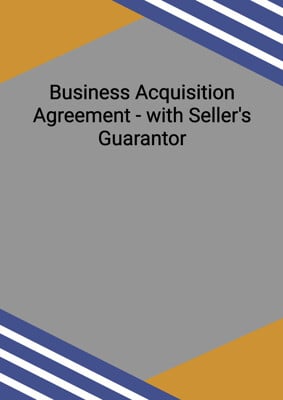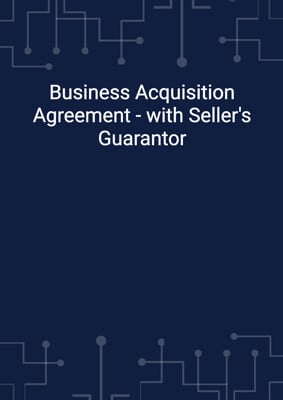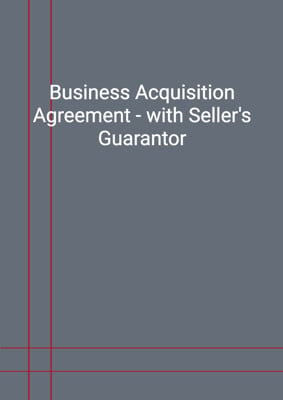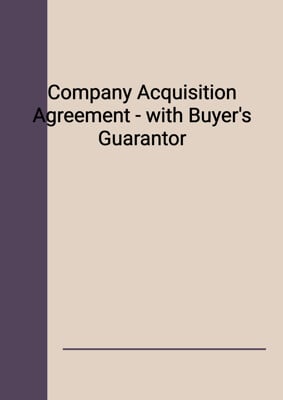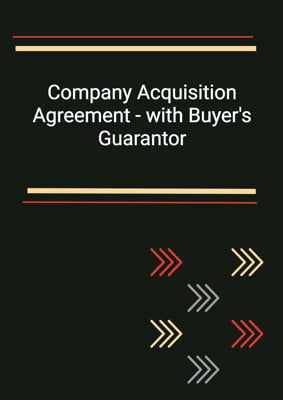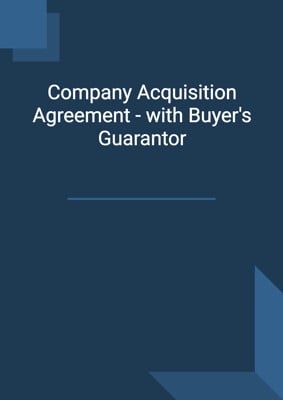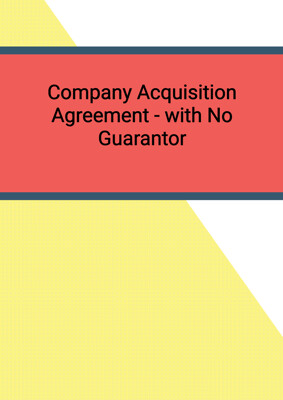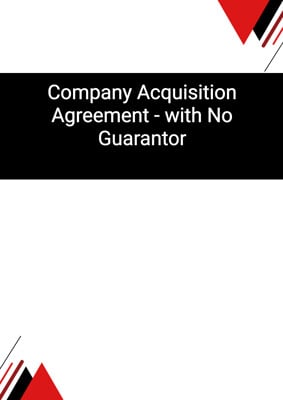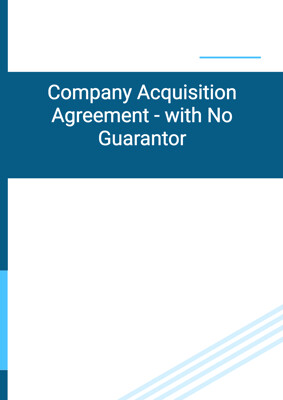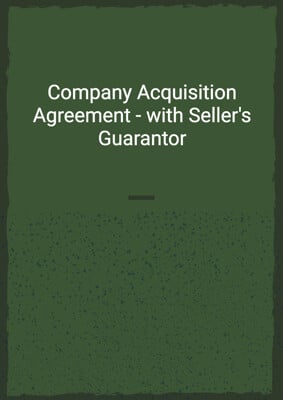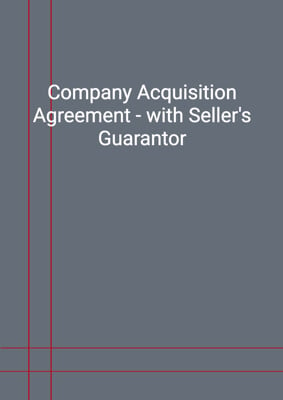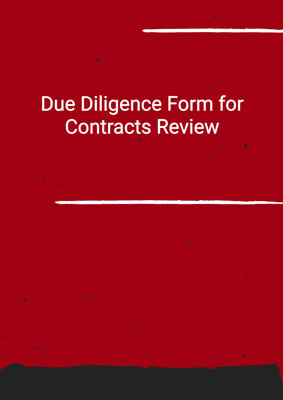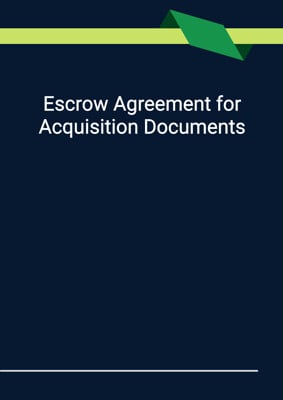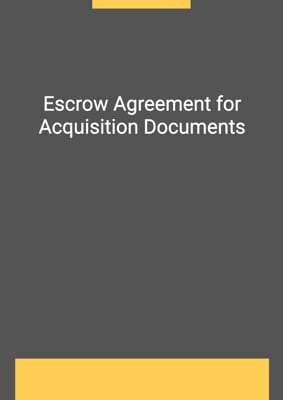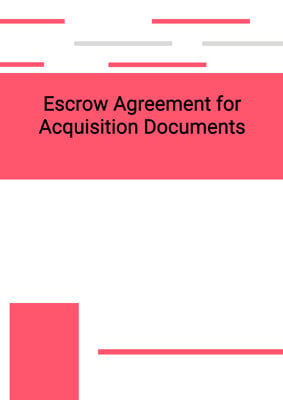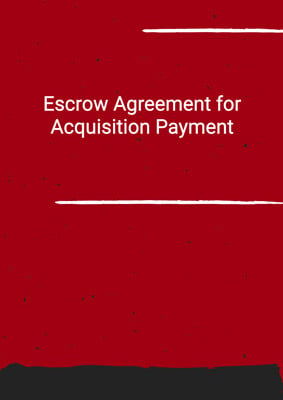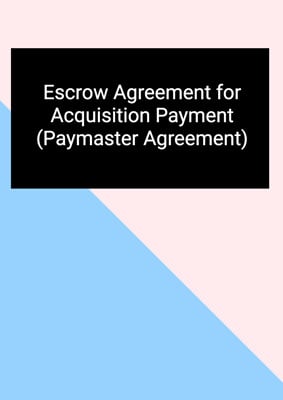How to Tailor the Document for Your Need?
01
Create Document
Fill in the details of the parties. You can click the "Fill with Member’s Information" button to complete it with information saved to your account.
02
Fill Information
Please fill in any additional information by following the step-by-step guide on the left hand side of the preview document and click the "Next" button.
03
Get Document
When you are done, click the "Get Document" button and you can download the document in Word or PDF format.
04
Review Document
Please get all parties to review the document carefully and make any final modifications to ensure that the details are correct before signing the document.
Document Preview
Document Description
The Company Acquisition Agreement - with Seller's Guarantor is a legal document that outlines the terms and conditions for the acquisition of a company. The agreement is entered into between the sellers, the buyer, and the guarantor. The sellers are the legal and beneficial owners of the share capital of the company, and they agree to sell all of the issued share capital to the buyer. The guarantor has agreed to guarantee the performance of the sellers' obligations under the agreement.
The agreement is divided into several sections, each addressing specific aspects of the acquisition. The interpretation section defines the terms used in the agreement. The sale of the shares and the price section outlines the terms of the sale, including the number of shares to be sold and the total price payable by the buyer. The conditions to completion section sets out the conditions that must be fulfilled before the sale can be completed.
The pre-completion undertakings section outlines the obligations of the sellers prior to completion, including conducting the business in the ordinary course, preserving and protecting the business assets, and allowing the buyer's representatives access to the books and records of the company. The completion section sets out the process for completing the sale, including the delivery of share transfers and other documents.
The completion accounts section deals with the preparation of the completion accounts, which will determine the final purchase price. The post-completion undertakings section outlines the obligations of the sellers and the buyer following completion, including the repayment of connected trading indebtedness and the cessation of the use of trade marks and logos.
The restrictions on the sellers section sets out the restrictions on the sellers from carrying on a competing business and soliciting employees of the group company. The warranties section contains the representations and warranties made by the sellers to the buyer. The limitations on claims section limits the liability of the sellers for any claims made by the buyer.
The buyer's rights to terminate section gives the buyer the right to terminate the agreement in certain circumstances. The withholding tax and grossing up section deals with the payment of taxes and the grossing up of payments to ensure the net amount received by the payee is not affected by any deductions or withholdings.
The entire agreement section confirms that the agreement and the disclosure letter set out the entire agreement between the parties. The variation section states that any variation of the agreement must be in writing and signed by all parties. The assignment section allows for the assignment of rights under the agreement by the buyer. The announcements section sets out the requirements for making announcements or disclosures in connection with the agreement.
The costs section deals with the payment of costs incurred in connection with the agreement. The severability section states that if any provision of the agreement is held to be invalid or unenforceable, it shall be deemed not to be included in the agreement. The governing law and jurisdiction section specifies that the agreement is governed by the laws of the relevant jurisdiction and any disputes shall be subject to the jurisdiction of the relevant courts.
The notices and service section sets out the requirements for giving notice under the agreement. The section also provides for the service of legal proceedings. The section on waivers/buyer's rights and remedies states that the buyer's rights and remedies under the agreement are cumulative and may be exercised as often as necessary. The section on no rights of third parties states that only the parties to the agreement have the right to enforce its terms.
The section on governing law, jurisdiction specifies the governing law and jurisdiction of the agreement. The section on notices and service sets out the requirements for giving notice under the agreement. The section on waivers/buyer's rights and remedies states that the buyer's rights and remedies under the agreement are cumulative and may be exercised as often as necessary. The section on no rights of third parties states that only the parties to the agreement have the right to enforce its terms.
The section on governing law, jurisdiction specifies the governing law and jurisdiction of the agreement. The section on notices and service sets out the requirements for giving notice under the agreement. The section on waivers/buyer's rights and remedies states that the buyer's rights and remedies under the agreement are cumulative and may be exercised as often as necessary. The section on no rights of third parties states that only the parties to the agreement have the right to enforce its terms.
How to use this document?
1. Review the entire agreement to understand the terms and conditions of the acquisition.
2. Pay attention to the sale of the shares and price section to understand the number of shares being sold and the total price payable by the buyer.
3. Ensure that the conditions to completion are fulfilled before proceeding with the sale.
4. Familiarize yourself with the pre-completion undertakings to understand the obligations of the sellers prior to completion.
5. Follow the completion process outlined in the agreement, including the delivery of share transfers and other documents.
6. Prepare the completion accounts in accordance with the requirements set out in the agreement.
7. Comply with the post-completion undertakings, including the repayment of connected trading indebtedness and the cessation of the use of trade marks and logos.
8. Adhere to the restrictions on the sellers, including not carrying on a competing business and not soliciting employees of the group company.
9. Be aware of the warranties made by the sellers and the limitations on claims.
10. Understand the buyer's rights to terminate the agreement in certain circumstances.
11. Ensure compliance with the withholding tax and grossing up requirements.
12. Keep in mind that the agreement supersedes all prior agreements and understandings.
13. Seek legal advice if needed to fully understand the terms and implications of the agreement.
14. Follow the requirements for giving notice under the agreement.
15. Be aware of the governing law and jurisdiction of the agreement.
16. Understand that only the parties to the agreement have the right to enforce its terms.
Not the right document?
Don’t worry, we have thousands of documents for you to choose from:
